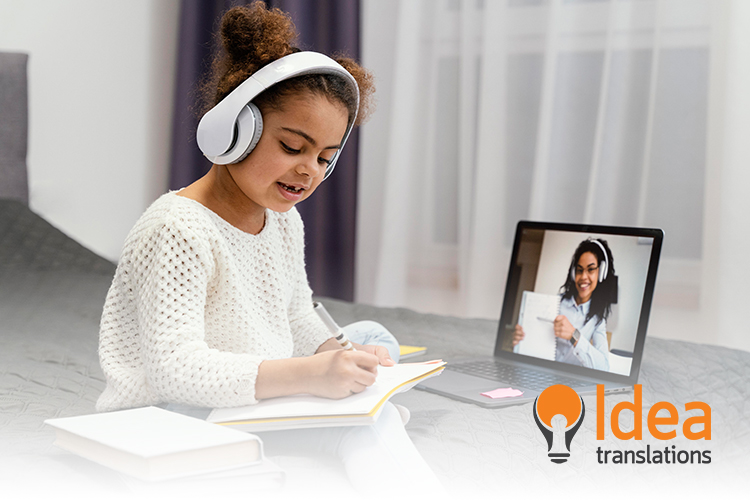
Dual Language Programs: how to make the most out of distance learning
In the last few years, we have seen an increase in dual language programs.
These are education programs in which students are taught simultaneously in two languages. This increase responds to efforts to reduce the education achievement gap between US students that are native English speakers and those that are non-native English speakers. However, additional benefits for these programs include bridging the gap between US students and students in other parts of the world who are used to learning in several languages for decades, and empowering non-native students to maintain proficiency in their native language and become fully bilingual in English and their native language.
These dual-language programs give Spanish, Arabic, Chinese, Vietnamese or Russian-speaking students a chance to receive part of their instruction in their native language. The language barrier not only affects children but their limited-English speaking parents as well, making them less involved in their children’s education and often creating disdain as opposed to pride on their roots.
With the COVID-19 pandemic, many schools had to close their doors and take their classes to the virtual world. The virus was particularly hard on dual language programs as schools tried to maintain continuity on critical content leaving dual education aside at least temporarily.
However, there are schools which have been able to turn things virtual with minimal disruption of their dual language program such as Portland Public Schools (PPS). Based on our experience working to help organizations like PPS, Stanford Public Schools, The Parent Project and others accelerate content development and translation to meet student’s dual language needs, we have put together some ideas and tools that can help education organizations get back on track on their dual language programs.
1. Learn about the tools. There are many platforms to use for distance learning.
- Seesaw. This tool is one of the most commonly used by our school district clients. It helps you design and implement classroom and homework activities in a simple and organized way and it’s got a very strong multilingual support. Plus, we are experts in it 😊.
- Google Classroom. The primary purpose of Google Classroom is to streamline the process of sharing files between teachers and students. Google Classroom is free and it simplifies creating, distributing, and grading assignments and it supports many languages.
- Zoom. Compared to other meeting platforms, Zoom has an extremely robust simultaneous interpreting feature. It allows (with the help of a remote interpreter) to have a simultaneous multilingual meeting which can be extremely powerful as students have the option to receive a class in their preferred language live. Learn more about this on our Zoom Simultaneous interpreting article here.
- Create a private Facebook Group for students and families to interact.
2. Less is more.
Children tend to learn quicker when the content is straight forward and it contains a string visual component. Clear content and fun visuals make for powerful education experiences.
3. Include off-screen activities.
Not everything should be in front of an iPad or PC. Writing, comprehension and creativity skills should be encouraged through textbooks, workbooks or simply free flow activities.
4. Videos.
Creating simple low production videos (like a teacher recording a quick learning snippet) are excellent learning tools and they are on demand. YouTube will prove to be a strong ally on this front. However, make sure you use the proper age settings on YouTube and the child is supervised. Also, videos can be seen on-demand so you are not restricted to a particular schedule. We suggest short videos (2 minutes or less).
5. Follow up and ask both parents and students for feedback. Have an interpreter if possible, in case parents are limited English Speakers.
6. Have a weekly bilingual challenge just for FUN!
With remote learning, students are no longer learning from playing and talking with each other in the classroom or playground; dual language teachers now have the task of providing relevant, authentic, education opportunities during these uncertain times.



